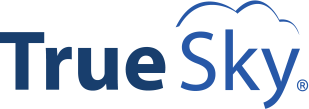Effective IT Planning and Budgeting: What It Is and How to Do It
 Of all the departmental budgets to consider, IT budgeting can often be one of the most complicated.
Of all the departmental budgets to consider, IT budgeting can often be one of the most complicated.
Especially in today’s digital world, IT planning and budgeting is becoming much more complex than ever before — and also more important than ever before.
As organizations move towards automation and becoming more digital, the IT department will have a bigger role to fill. This might mean planning in advance for network changes, new cloud technology investments, and increased software training. In short, the IT planning that used to work might not cut it anymore.
With that in mind, here are five tips that could help refocus your IT budget to align with new goals and priorities.
- Do Not Let the Budget Get Complacent
While all departments should not rely on the “same old, same old” method of budgeting — i.e. copying and pasting last year’s budget and calling it done — IT should be especially careful of doing so.
That is because, as mentioned, IT planning requirements are constantly changing along with the technological landscape. Each fiscal year (and perhaps even more frequently) you will want to be conducting audits of current networks, hardware, and software to find efficiencies and upgrade opportunities.
You will also have to consider external costs, such as software-as-a-service (SaaS) subscription fees, cloud hosting dues, and more.
The IT department is not stagnated. Your budget should not be either.
- Consider Rolling Forecasting
According to a study, 64% of annual forecast targets are obsolete after four-to-six months.
In today’s climate, yearly budgeting and forecasting may be too infrequent. You might consider moving to quarterly or monthly forecasting instead.
Rolling forecasts offer more flexibility, help respond to industry changes quickly, and can improve spending decisions.
Want to learn more about rolling forecasts? Download our free eBook Why You Should Be Doing Rolling Forecasting and How to Do It Successfully.
- Plan Ahead – And Strategically
There are a lot of great automation tools and software being developed that could potentially help your business save time and money — but they come with a cost. While many of these applications offer a big return on investment, they will also require advance planning to finance.
It can help your IT department to create a strategic plan, identifying three-to-five priorities for the year ahead (or even longer-term). From these priorities, you will know what you need to save and where to focus your spending efforts.
- Consult with Other Departments
The IT department does not operate in a silo. Its processes and decisions will be affected by other sectors of the company and vice versa. It can help to consult company-wide to see what other departments are planning and how those plans will affect the tech team.
For example, if the finance department wants to invest in budgeting software, what department is paying for that purchase? If the money is coming from the finance department, will there be additional costs required from the IT budget — project management, staff training, additional maintenance, project implementation, etc.
Conversely, if the IT department sees room for automation or moving to a digital process for another sector, they might raise that suggestion and set the budget discussion in motion.
A good way to keep everyone involved is by having all relevant parties review draft budgets and leave comments.
- Track Data to Prove ROI
Proper budgeting and planning are two parts of the process but there is a third, arguably even more important, component: analyzing.
Of course, every department needs to analyze their budgets to make sure they are on track and to record patterns. But IT should be paying special attention to this, particularly when it comes to ROI.
For instance, let’s say that the IT department suggested (and maybe even budgeted for) a piece of automation software that ends up saving the company a vast amount of money. The only way to know if that money is being saved is to track the data.
If the IT department knows that their software is saving big bucks, they could approach the CEO or CFO with that information and perhaps negotiate to have those savings put back into the IT team to fund more projects.
True Sky’s corporate budgeting, planning, and forecasting software makes the IT planning process simple. With our tool, businesses can easily share budgets between departments, track changes, analyze data, and more.
Contact us today to learn about all the possibilities. Call 1 855 878 3759 or visit www.truesky.com.



